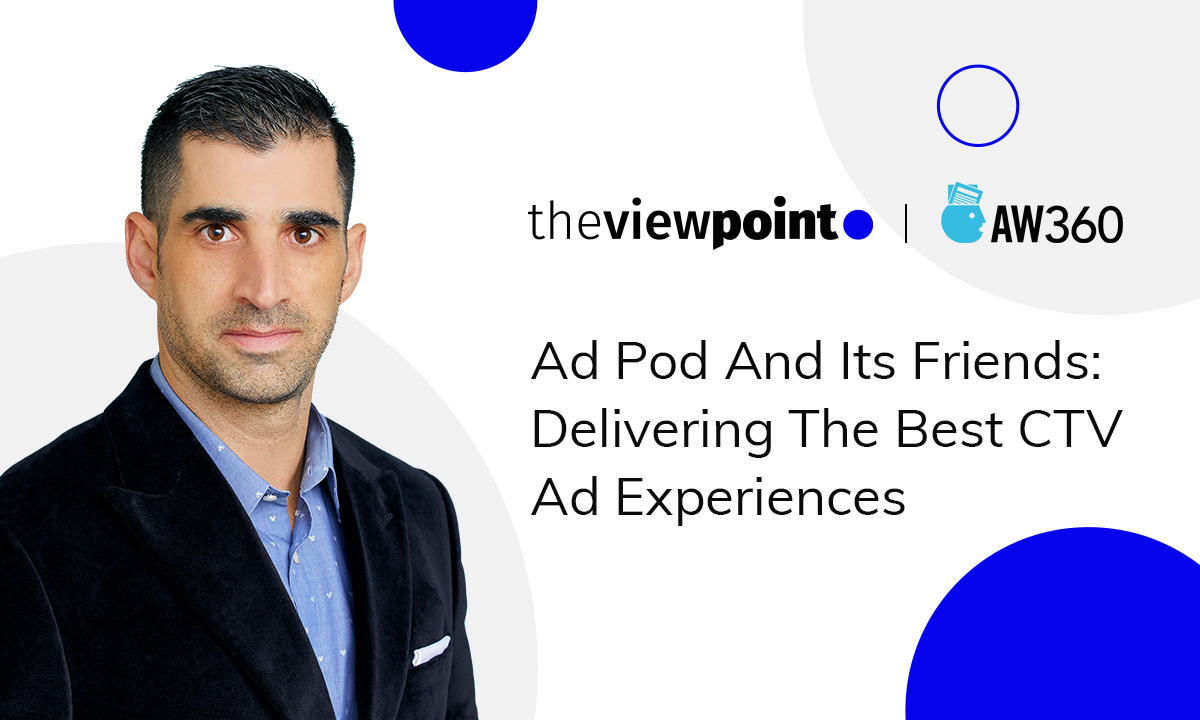
The Power of Pre-Roll Ads in the CTV Ecosystem
Advertising on connected TV (CTV) has been surging as a result of the pandemic-era media environment, and is one of digital advertising’s fastest-growing domains. Consumers have increasingly been disconnecting from linear TV services like cable and satellite while spending more time with OTT video, especially video streamed on CTV devices. Naturally, advertisers have followed suit. According to report from eMarketer, US ad spending for CTV will top $27 billion by 2025, while combined ad spending on linear and CTV platforms will reach $93 billion – up from about $80 billion this year.
Get to Know the In-Stream Ad
CTV advertising allows marketers to reach viewers who just aren’t there for traditional TV commercials. To help them make the most of CTV advertising, we’re going to talk about the ins and outs of the most common type of streaming video advertisement: the in-stream pre-roll ad.
In-stream video ads appear in the same video player where the content is being streamed. The ads can play at three different stages: pre-roll, mid-roll, and post-roll. In-stream video ads resemble traditional linear TV commercials and are generally accepted as non-intrusive, and they are even sometimes welcome when served in the right context to the right user. These ads are great for generating brand visibility, which means they are a key monetization tool for content publishers – especially in the CTV universe.
Pre-roll ads are played before the content, when there is generally the highest chance of capturing the viewer’s attention. Mid-roll ads appear during pauses in the main video, just like traditional linear TV ads appearing in the middle of TV programs. This means they’re often well-received by viewers accustomed to linear TV. Post-roll ads are placed at the conclusion of the content. Since they don’t interfere with the viewing experience, consumers are more likely to follow the call to action right after they finish viewing the ad.
Pre-roll is among the most common in-stream ad formats used by TheViewPoint clients. So, let’s examine pre-roll ads more closely.
What Is a Pre-Roll Ad?
Pre-roll ads are the type of advertisement viewers most used to seeing while watching online video content. They’re common on all major platforms, like CTV, mobile, and desktop.
Pre-roll video ads are highly efficient. When the audience is about to watch the chosen content, they are engaged, receptive, and willing to hear what brands have to say with their ads in order to get to what they want to watch. Since the viewers are waiting for something specific, they are likely to watch the ad for at least a few seconds, if not until the end.
On some platforms, pre-roll advertisements can be disabled. Twitch pre-roll ads can be disabled for incoming viewers (thereby allowing them to instantly start watching once they log on instead of having to wait for an ad to play) if streamers run regular ad breaks during their stream. When a streamer runs a 30 second ad break, they can disable pre-roll ads for the next 10 minutes. When a streamer runs a 60 second ad break, they disable pre-roll ads for the next 20 minutes. When a streamer runs an ad break that’s 90 seconds or longer, pre-roll ads are disabled for the next 30 minutes. YouTube allows users to disable pre-roll ads entirely when users sign up for YouTube Premium.
Ads are predominantly non-skippable on connected TV, but some services allow skippable advertising. YouTube pre-roll ads, for example, are often skippable after five seconds. This makes them more user-friendly, and the skipping feature also allows marketers to figure out which users are more likely to be interested in the product (those who watch well past the pre-skip play) and those who aren’t (those who skip as soon as the five seconds are up). Companies can ensure a better experience when they provide consumers with the option to manage their digital ad viewing. With skippable pre-roll ads, viewers can watch full pre-roll commercials – only at their own interest, rather than because they’re required to.
Non-skippable pre-roll ads must be played to completion before the viewer can proceed to chosen video content. Because viewers are obliged to watch the full message, platforms charge more for them, and the audiences may not be happy with being kept away from their content. However, with non-skippable pre-roll ads, advertisers can be sure that the full message gets put in front of the audience.
What Are the Benefits of Pre-Roll Ads for Publishers?
Pre-roll ads offer a creative and visual way to promote a product or service and generate brand awareness. They have become an accepted part of our media consumption habits, and publishers can count on them as a solid method for monetizing their content, the revenues of which will grow along with their audience. Moreover, studies have shown that pre-roll ads are the least intrusive video ad type compared to mid-roll and post-roll ads. Advertisements are often unpopular in general, but they’re the backbone of content monetization. When platforms or content creators use pre-roll ads, they can be confident knowing that these types of advertisements won’t annoy or alienate viewers.
What Are the Benefits of the Pre-Roll Ads for Advertisers?
Pre-roll ads account for a fraction of the available video inventory, but they have become quite popular among marketers. Ads on streaming video are necessary to meet the most desirable customers on the platforms where they’re watching, and the advances of the past 10 to 15 years in ad tech have allowed advertisers to target users based on criteria like video topics, interests, demographics, user behavior, browsing habits, and more. Ads on streaming video also give advertisers the chance to immediately assess the effectiveness of their ads when users click on them as they play.
There are also particular benefits from pre-roll streaming ads as a category. They can guarantee to advertisers that at least some of their message will get across to these targeted viewers. This makes in-stream pre-roll ads significantly superior to traditional linear TV ads. After all, with traditional TV ads, marketers can’t be sure whether target customers are even watching the program on which the ads air, or whether those customers are actually watching their screens while the ads play. Pre-roll ads target viewers while brands have their attention (right as they’re opening a video to play), and they do so in the least intrusive way.
How to Make the Best Pre-Roll Ads?
Regardless of whether the ad is skippable or non-skippable, brevity is key. Not only are shorter ads cheaper than longer ones to produce and place, but since viewers want to get to their content as soon as possible, advertisers don’t want to aggravate them by keeping them any longer than they have to. The best bet is always to frontload the ads to make them as appealing as possible as early as possible.
For longer (up to 30 seconds), non-skippable spots, it’s better to put the most important message in the first few seconds. Give a more detailed explanation in the middle 20 seconds or so, then end by repeating the main message and/or showing the product on screen. For skippable spots, start by featuring the product or service right away, and directly appeal to the audience you’re targeting before you provide the option to skip. Customers who are convertible will then be able to hear more, while those that are not will skip the rest of the ad. Once you’re left with convertible viewers, briefly show how the product or service is able to solve a problem they have. Then, provide the viewer with a call to action and direct them to where they can learn more and perform the conversion.
Takeaways
Pre-roll ads are part of our standard ad diet these days. When run effectively, they do a great job of spreading brand awareness and even bringing potential customers further down the conversion funnel. If you’re looking at monetizing your CTV content, pre-roll ads will be an indispensable part of your monetization strategy!
Related
Programmatic TV Tax Day is Not Just April 15. It's Every Day
This blog examines the significant "AdTech tax" in Connected TV advertising, advocating for Tatari's direct integration with publishers to bypass hidden fees, resulting in substantial cost savings and enhanced transparency.
Read more
Ad Pod And its Friends: Delivering the Best CTV Ad Experiences
Aiming to stand out from the crowd and surpass consumers’ expectations, CTV advertisers have to be allied with publishers and very savvy at applying innovative advertising techniques, like frequency capping, competitive ad separation, and deduplication. Though still raising a lot of eyebrows, these tools have already become the next big thing in the advertising world. So, before diving deep into the details of ad pod management, let’s take a sneak peek behind the scenes of modern CTV play.
Read more
Everything You Need to Know About Real-Time Bidding
As programmatic advertising is gaining momentum, RTB or real-time bidding comes in. In fact, most platforms in ad tech today are RTB enabled. But what does that actually mean? What is an RTB platform and why is it so important for digital marketers? Let’s get the answers to these questions and more.
Read more


